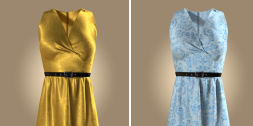Since Shrek 2, DreamWorks artists have used the fabric model developed by [Glumac and Doepp 2004] extensively on cloth material shading. Even after we developed the physically based microcylinderical cloth model by [Sadeghi et al. 2013], they continued to prefer the intuitive control of the DreamWorks fabric shading model, which is also a cyindrical shading model, with easy to use artistic controls for highlights, and highlight directions. In this talk, we present our approach to make this much-loved, production-oriented fabric shading model physically plausible, so we can use it within the framework of a physically based renderer that requires its brd f models to be energy conserving and, ideally, reciprocal as well. We also present an accurate importance sampling algorithm for this fabric shading model that makes it efficient to render within a path tracer.




 Phone: (818) 695 - 5000
Phone: (818) 695 - 5000 E-mail:
E-mail: